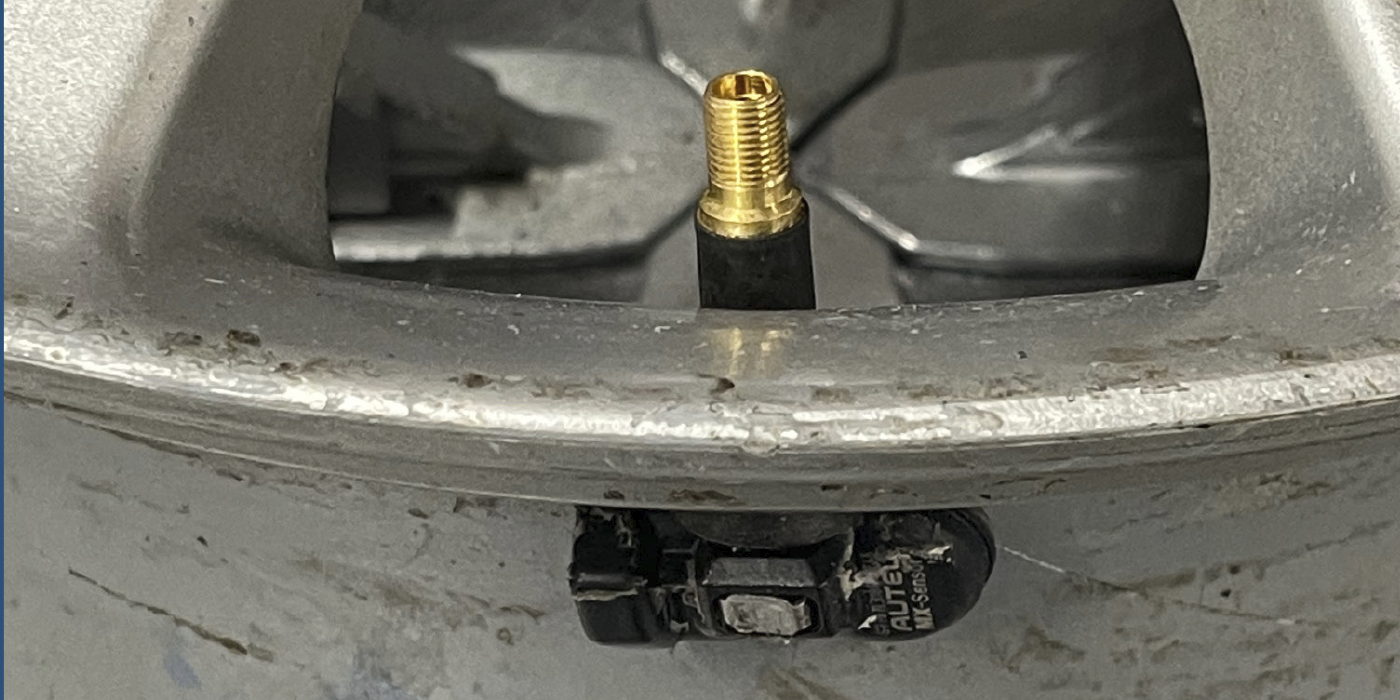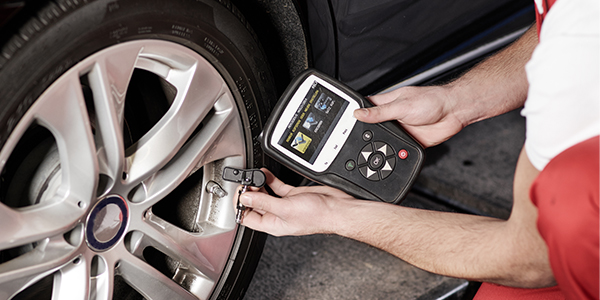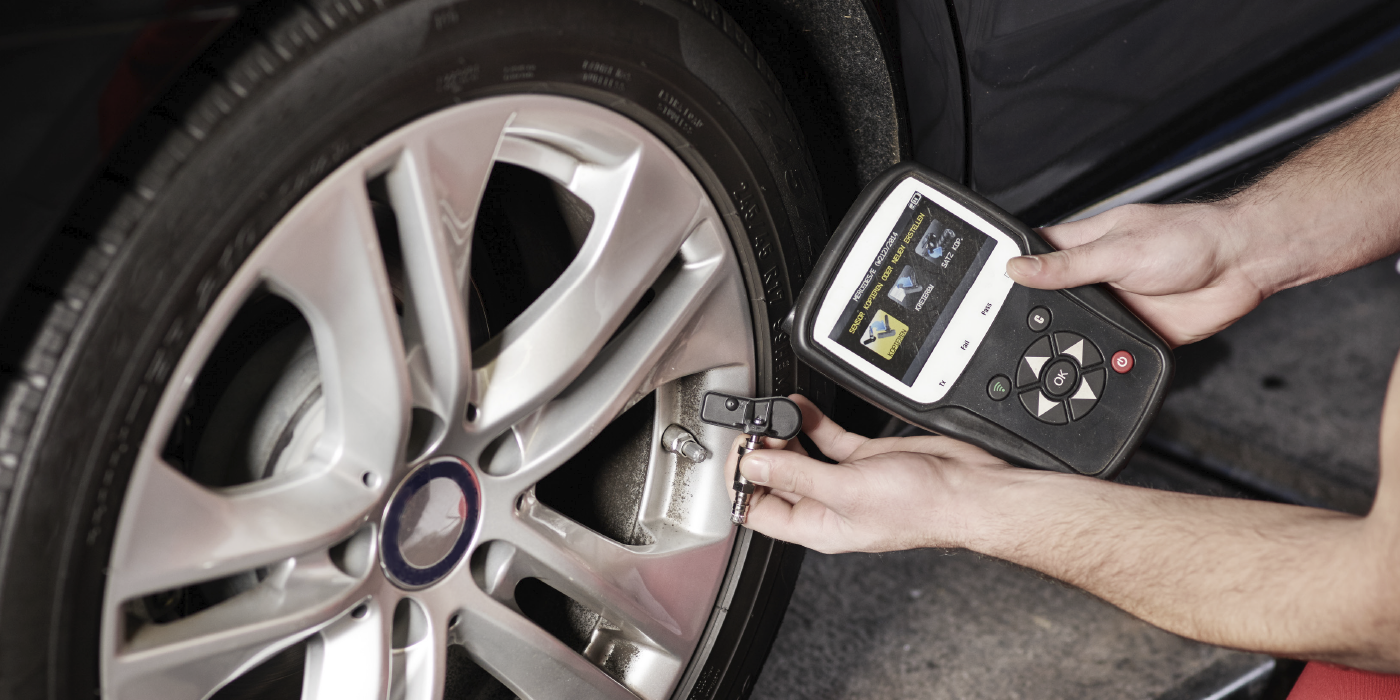By Sean Phillips

I spent many years managing a wheel repair shop where our primary business was straightening wheels that had been bent. Many of our customers came to us by way of other tire dealers, where their tire techs had identified an issue and referred the customer to us for repair.
One problem that we often encountered was that many tire technicians tended to have trouble properly diagnosing the causes of certain vibrations, especially in terms of distinguishing a bent wheel from an out-of-round tire. That’s not actually a difficult process, but it’s one that requires some care and knowledge that is not often included in the basic get-in-there-and-do-it training that most tire techs get.
So, here is a primer on bent wheels, out-of-round tires and how to diagnose vibration issues.
For a car to run smoothly requires that the transmission of contact forces between road and tire to be achieved within very tight tolerances. Most vibration problems are caused by the wheels or tires being out of tolerance in some way. Either the wheel is bent or the tire is not completely and truly round (steel belts are improperly aligned, there is hidden delamination, damage from a pothole, etc.). Today’s vehicles are extremely sensitive to even the slightest tire/wheel imperfection.
The art of diagnosing vibration issues begins by determining which of these is actually happening, or whether some other cause is present.
If a customer comes to you complaining of a vibration, your first question should always be “Where exactly are you feeling this vibration?”

You want to know if they feel it in the steering wheel, or in the driver’s seat, or in the brake pedal – the location is key to helping diagnose where the shake is actually coming from.
If the customer is feeling it in the steering wheel, the problem is likely in one of the front tires or wheels. In the seat is more likely a rear tire/wheel. If the customer is feeling vibration in the pedal under hard braking, they probably have a warped brake rotor.
But you’re not done with the detective work.
Another good question to ask is whether the vibration only seems to occur in a certain range of speed. A vibration that is most apparent within a certain speed range is a pretty classic symptom of either a wheel or tire being out-of-round, as the vibration harmonic reaches a point where it modulates and overcomes the suspension’s ability to damp it out.
Do remember, however, that these are guidelines rather than hard diagnoses; it’s certainly possible for a bent front wheel to shake the seat more than the steering wheel, and it’s also possible for a bad alignment to mimic any of these types of vibrations. You’ll need to get the wheels off the car to get hard data, but getting this basic information gives you a good place to start.
Also, it’s been my experience that few things will set a customer more at ease than a technician who is asking targeted questions and, obviously, listening to the answers.

Proper Process
When diagnosing any vibration issue, the order of importance can be defined as WTAS: Wheels, Tires, Alignment and Suspension. There are other possibilities of course – I once spent months attempting to fix a mysterious vibration that finally turned out to be due to a sheared engine mounting bolt that was allowing the unsecured engine to shake the entire car – but causes beyond WTAS are generally very low-order probabilities.
The first action to take is to put a tire and wheel assembly on a balancer and spin it by hand without dropping the hood. With your eyes at wheel level, take a close look at the inboard and outboard edges of the wheel, right where the metal meets the rubber.
The wheel should spin in a completely motionless circle, “stable as a table.” You’re looking to see if the edges of the wheel wiggle at all. The usual factory spec for wheel roundness is .030-inch – thirty thousandths of an inch. While that’s an extremely small number, most deviations outside that spec can usually be seen pretty clearly by a Mark One Eyeball Detector while the wheel is spinning.
The vast majority of bends will occur on the inboard side of the wheel, as the outboard face has the spokes to stiffen it (although “deep dish” wheels that have the spokes set well back from the edge are very susceptible to outboard face bends, as well).
Pro Tip: For reasons that are probably related to weight and performance issues, the alloy wheels on European (and specifically German) cars are softer and bend easier than most American or Japanese wheels. This is especially true with BMW wheels. No carmaker on the planet installs OE wheels that bend more easily than BMW.
Once you have determined that the wheel is straight, only then should you look at the tire. Because the bead of the tire will try to follow the lip of the wheel, a bent wheel will always cause the tire to look like it is out-of-round even if it is not, and this is where it is easy to misdiagnose the cause of the problem. Time and time again, I have seen techs look solely at the tire and pronounce the issue to be a tread separation, when the actual problem is a bent or damaged wheel.
Once the wheels are known to be stable, continue hand-spinning the assembly and put your eyes at the level of the tire tread and look across the tread surface for movement that might indicate internal damage or irregular wear. You can also look at the tread straight on to determine if the tread blocks are moving side to side.
There are two possible causes for lateral movement of the tire: The wheel could be bent laterally, usually by a sideways impact against a curb, but if the wheel is not itself moving side-to-side while spinning then the issue is usually alignment, specifically bad toe-in that is causing the tire to “scrub” and wear funny.
Suspension issues can be complex, and are somewhat beyond the scope of this article, but should be investigated as a cause of last resort if all else fails. Bad shocks, loose control arms, worn tie rods and bad wheel bearings can all cause both vibration problems as well as irregular tire wear, so you should always be careful that you’re not just identifying tire wear as the problem, when it might actually be a symptom of an underlying cause.
One more thing to keep in mind: Back in prehistoric days when men were men and wheels were steel, a mechanic or tire tech could straighten a bent wheel by hammering out the bend. While that method has no precision at all, it was possible to make a steel wheel marginally acceptable this way.
With today’s aluminum alloy wheels, there are few better ways to destroy the wheel. Cold hammering an alloy wheel will most likely crack it before it becomes straight.
Possible Fixes
Although replacing an alloy wheel can be enormously expensive, other options exist, including reconditioned replacements and wheel straightening. There are many competent straighteners and reconditioners out there from which to choose.
It is very important, especially with custom wheels, that any damage be fully and completely inspected. Minute hairline cracks could be caused by typical “minor” curbing or, as with this winter’s weather, hitting a pothole. Those cracks can become a catastrophic failure, and any wheel repair shop worth its salt will scrap rather than attempt to fix a potentially dangerous wheel.
Some dealers may think that switching a bent wheel from the front to the rear axle can sometimes act to damp out a vibration, giving the customer a “cheap fix.” While doing that might result in nothing more dangerous than irregular wear on the tire, the potential danger from unseen damage should outweigh any perceived benefit.
While we have covered the primary ways to diagnose known vibration problems, it’s also generally a good idea to perform these kinds of checks even when simply putting new tires on customer wheels or rebalancing existing tires.
Keeping an eye on these types of issues will contribute to great customer service, increase your customer’s trust in your skill and care of their vehicle, and keep those customers coming back to your shop.
Article courtesy of TIRE REVIEW.













